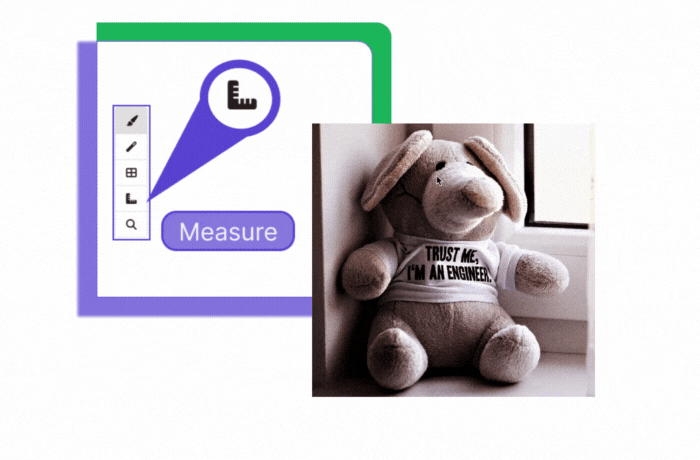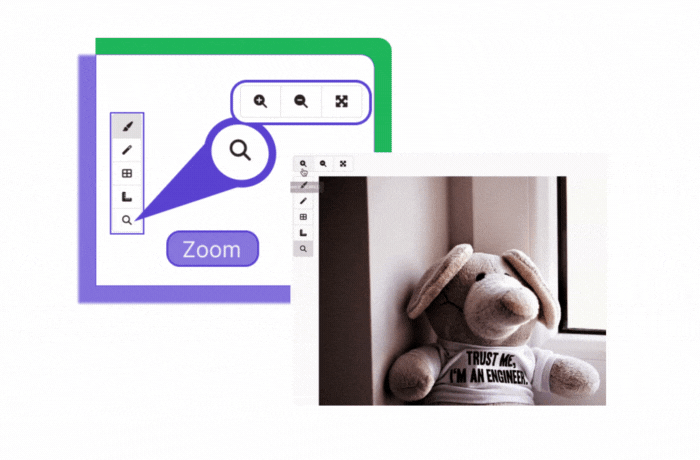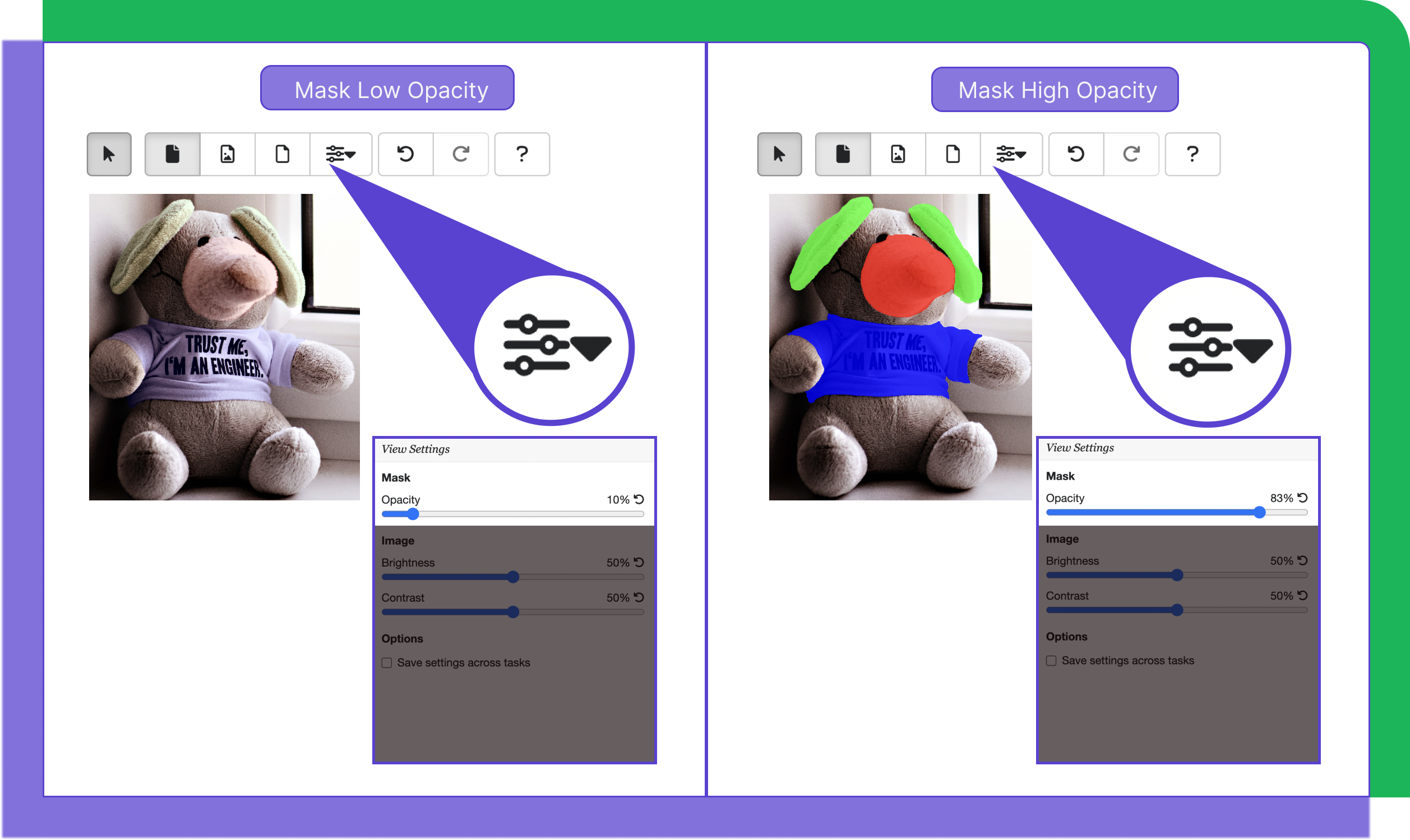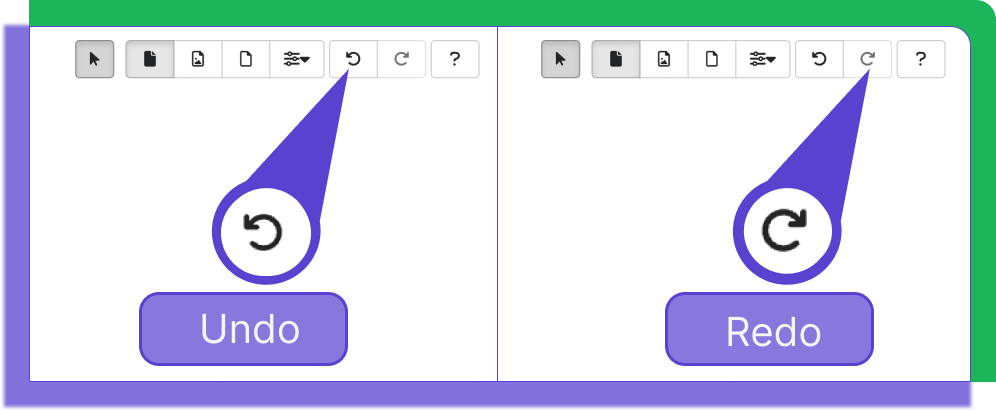Workspace
Updated at May 24th, 2023
Annotating in the workspace
When you are working on an Image Annotation task that contains a raster image, your workspace will resemble the following:

Each of these four main areas of the workspace is described in detail in the sections below.
Measure
The Measure tool allows you to measure an object without drawing on the image. This is particularly useful for QAs, who may need to measure unannotated objects to see whether they should have been annotated based on project-specific quality requirements.
To measure an object:
1. Click on the corner of an object.
2. Drag your mouse to the opposite corner of the object and note the measurements; once you release the mouse button, the shape will disappear.

Zoom
The Zoom tool adds three more buttons to the workspace that you can use to adjust the zoom level.
Zoom In: Zooms in by 10%.
Zoom Out: Zooms out by 10%.
Reset Zoom: Resets the zoom to 100%.
Tip
To zoom in really close on a specific part of the image, use your mouse to draw a rectangle around that area — you'll zoom in automatically.
If you need to pan around your image while you're zoomed in, use the scroll wheel on your mouse to pan up and down, or hold Shift and scroll to pan side to side.

Top toolbar
The top toolbar contains an assortment of helpful tools for adjusting how the image and shapes are displayed, undoing or redoing actions, and referencing keyboard shortcuts.
Mask, Both, and None
If you find your workspace getting busy, these three options can be extremely helpful for removing some of the visual clutter. Sometimes making only one layer visible at once — either the label mask or the original image — can make it easier to achieve pixel-perfect quality.
Mask: Displays only the label mask that has been applied to the pixels.
Both: Displays both the original image and the label mask.
None: Displays only the original image.

View Settings
These settings allow you to personalize the way that the mask is displayed in the workspace. These settings are just for the workspace and aren't saved along with the task when it's submitted.
Mask
-
Opacity: Increases or decreases the opacity of the mask, so you can see less or more of the image behind.

Image
These settings can help save your eyes if you're working on an image where it's hard to make out details.
-
Brightness: Increases or decreases the brightness of the image.

-
Contrast: Increases or decreases the contrast of the image.

Options
-
Save settings across tasks: Saves your mask view settings and applies them to all tasks that you'll work on going forward.

Undo/Redo
You can undo up to 1,000 actions in the workspace, so even the biggest of mistakes can be erased! Just about any kind of action can be undone or redone, except for zooming and panning.

Keyboard Shortcuts
This button displays a pop-up cheat sheet of all the available keyboard shortcuts for easy reference.
Tip
Use keyboard shortcuts whenever possible to save time when annotating. Annotators who use keyboard shortcuts for all their repetitive tasks are substantially more efficient than annotators who rely on a mouse.

Shortcuts List
| Functionality | Key |
| Decrease opacity | [ |
| Increase opacity | ] |
| Decrease brightness | - |
| Increase brightness | = |
| Decrease contrast | SHIFT+_ |
| Paintbrush tool | B |
| Fill tool | F |
| Superpixel tool | U |
| Mesure tool | M |
| Zoom tool | Z |
| View mask/both/image | R |
| Undo | CMD+Z |
| Redo | CMD+SHIFT+Z |
| Pan | RIGHT CLICK+DRAG, WASD |
| Zoom | SCROLL |
| Reset zoom | 0 |
| Erase(no label) | OPTION+CLICK |
